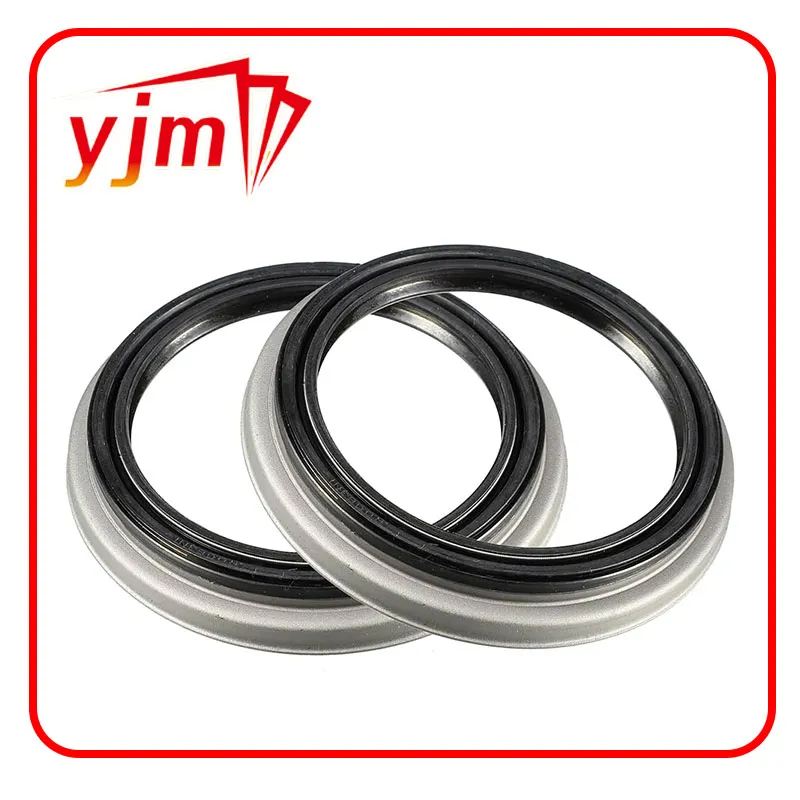Understanding Oil O-Ring Seals and Their Applications in Various Industries
Understanding Oil O-Ring Seals Essential Components for Sealing Applications
Oil O-ring seals play a crucial role in various mechanical systems that involve the use of fluids, especially oils and other lubricants. These vital components are designed to prevent leaks by providing a tight seal between two mating surfaces, ensuring that the fluids stay contained within a designated space. This article explores the significance, construction, materials, applications, and maintenance of oil O-ring seals.
The Importance of O-Ring Seals
O-ring seals are essential in countless applications across multiple industries, including automotive, aerospace, manufacturing, and even household appliances. Their primary purpose is to prevent fluid leakage, which can lead to reduced efficiency, safety hazards, and environmental concerns. A malfunctioning O-ring seal can cause oil to seep out of engines or hydraulic systems, ultimately resulting in equipment damage and costly repairs.
Moreover, O-rings maintain the integrity of equipment under varying temperature and pressure conditions. The simple yet effective design of O-rings allows them to be used in dynamic applications, where there is relative motion between parts, as well as in static applications where there is no movement.
Construction of O-Ring Seals
An O-ring is typically a circular loop made from elastomeric materials. Its shape is critical for compression, which enables it to create a seal when inserted into a groove between two sealing surfaces. The compression of the O-ring allows it to deform and fill the gap, thereby preventing any fluid from leaking out.
The design of an O-ring involves several specifications, including its inner diameter (ID), cross-sectional diameter, and hardness. These measurements are crucial for ensuring a proper fit in the designated groove. The effectiveness of the seal relies heavily on these parameters, as an incorrectly sized O-ring could lead to failure or leakage.
Materials Used in O-Ring Seals
The material chosen for an O-ring is of utmost importance, as it must withstand the specific conditions of its application, including temperature ranges, chemical exposure, and mechanical stress. Common materials used in O-ring production include
oil o ring seals

2. Viton (FKM) Known for its high-temperature and chemical resistance, making it suitable for harsher environments.
3. Silicone Ideal for applications with extreme temperature variations but has lower mechanical strength and abrasion resistance.
4. EPDM Suitable for water and steam applications, it is often used in HVAC systems and automotive cooling.
The choice of material directly impacts the performance and longevity of the O-ring seal.
Applications of Oil O-Ring Seals
Oil O-ring seals are ubiquitous in various sectors. In the automotive industry, they are commonly found in engines, fuel systems, and hydraulic systems where they prevent oil leaks and maintain pressure. In manufacturing, they are used in hydraulic cylinders, air compressors, and pneumatic systems to ensure that critical fluids remain contained.
Moreover, in household appliances, O-rings can be found in dishwashers, washing machines, and refrigerators to prevent leaks and optimize system performance. Their versatility makes them an integral part of modern machinery and equipment.
Maintenance and Replacement of O-Ring Seals
Regular inspection and maintenance of O-ring seals are essential to prevent unexpected failures. Signs of wear, such as cracking, hardening, or swelling, indicate that O-rings need to be replaced. Proper installation is also crucial; the use of lubrication during installation can help prevent damage to the O-ring and increase its lifespan.
In conclusion, oil O-ring seals are fundamental components in fluid containment applications, playing a vital role in numerous industries. By understanding their importance, materials, and proper maintenance, industries can ensure the longevity and effectiveness of their sealing applications, ultimately enhancing operational efficiency and safety. Proper selection, installation, and periodic replacement of these seals are key to preventing leaks and maintaining system integrity.
-
Understanding the Front Main Engine Seal: Purpose, Maintenance, and Installation
News Jul.29,2025
-
Understanding O-Rings and Seal Rings: Types, Applications, and Custom Solutions
News Jul.29,2025
-
Understanding Crankshaft Oil Seals: Rear Seals, Pulley Seals, and Their Role in Engine Integrity
News Jul.29,2025
-
The Importance of Front and Rear Crankshaft Seals in Engine Performance and Oil Management
News Jul.29,2025
-
Crank Oil Seals: Functions, Types, and Cost Considerations in Engine Maintenance
News Jul.29,2025
-
A Comprehensive Guide to O-Rings and Seals: Types, Materials, and Global Applications
News Jul.29,2025
-
Mastering Diesel and Performance Engine Maintenance: A Guide to Critical Oil Gaskets
News Jul.28,2025
Products categories















